No one likes a cloudy saltwater pool. Aside from it looking uninviting, it’s a sign that something is wrong. So what causes your saltwater pool water to turn cloudy or milky, and how do you clear the water? The answers to these questions and more will be revealed in this post.
Let’s dig in.
Article Contents
Why Is My Saltwater Pool Cloudy?
Here we give the common reasons for cloudy saltwater pool water and how to clear the water.
1) Insufficient Chlorine Level
Lack of chlorine is a very common cause for cloudy saltwater pool water.
In case you don’t know, saltwater pools are actually chlorine pools. Instead of adding chlorine manually, as you do in a regular chlorinated pool, saltwater pools use a saltwater chlorine generator system (SWG) to convert saltwater to chlorine.
There are several reasons for not enough chlorine in a saltwater pool:
- Saltwater generator set too low
- Not running saltwater generator long enough
- Dirty or worn out salt cell
- Defective saltwater chlorine generator
Low chlorine levels lead to cloudy water through contaminants or algae.
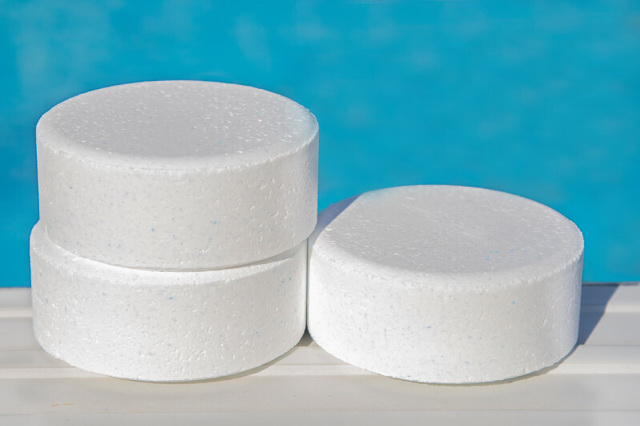
How To Fix Low Chlorine Levels
To fix low chlorine levels, you need to up the chlorine to the ideal range. You can do this by increasing the output power level of your saltwater chlorine generator (aka SWG or chlorinator). You can also run the SWG and pool pump longer to increase the chlorine.
While you’re at it, check if the saltwater cell is dirty. Clean it if it is dirty. Here’s how:
How to Clean a Pool Saltwater Cell Like a Pro! (and when)
If your chlorine levels are particularly low, you can shock your pool. This will kill off any algae and organic matter in the pool and rapidly increase the chlorine levels.
It’s also OK to manually add regular pool chlorine for a quick fix. You can use liquid chlorine, chlorine tablets or powdered chlorine. All work fine.
The ideal chlorine range for saltwater pools is between 3-5 ppm.
To get rid of cloudy saltwater pool, learn how to shock your saltwater pool here.
2) Incorrect pH Level
The pH level in your saltwater pool should be between 7.2 and 7.6 on the pH range with the optimum value being 7.4. It’s another reason why your salt pool is cloudy. If the pH is incorrect, the effectiveness of the chlorine sanitizer will be reduced.
And as you now know, if the chlorine isn’t working, you’ll get cloudy water or even algae.
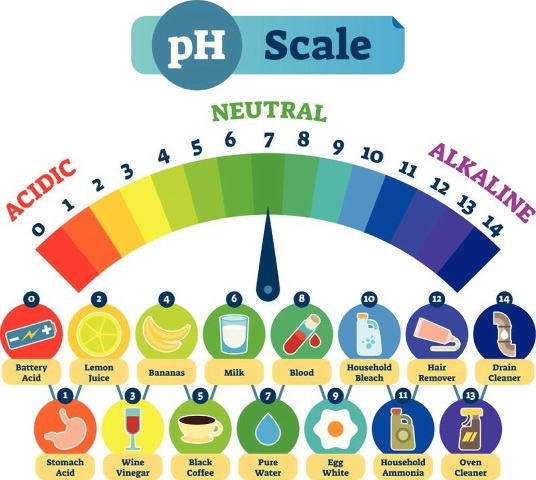
How To Fix Incorrect pH Level
Here is a guide to fix incorrect pH level:
- Use a pool scoop net to remove floating particles in the pool water
- Test the pH level of the pool using test strips.
- Add muriatic acid to decrease the pH level and soda ash to increase it
- Quickly test your saltwater pool's salt levels
- Accurate measurements for salt levels from 400 to 7,000 ppm
- Easy to use, no measuring & counting drops
Here’s a full guide to adjust your pH:
How to Raise pH Level
How to Lower pH Level
3) Incorrect Stabilizer Level
Chlorine stabilizer, also known as cyanuric acid, helps to stabilize the chlorine molecules in the pool. If the chlorine in your saltwater pool isn’t stabilized, it will break down quickly and be destroyed by sunlight.
The stabilizer level should be between 30ppm and 50ppm. An incorrect stabilizer level will affect the effectiveness of chlorine.
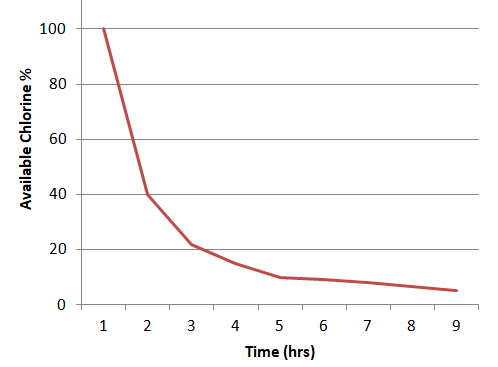
If the stabilizer level is too high, chlorine can’t work at its optimum. This will cause cloudy pool water or algae in your saltwater pool.
If the stabilizer is too low, the chlorine will be degraded by sunlight. This will lead to low chlorine levels, and in turn, also cause cloudy and murky pool water.
How To Fix Stabilizer Level
- Test the stabilizer or CYA levels in the pool
- Calculate the volume of water in the pool
- Calculate by how much you need to raise or lower the stabilizer level
- To raise it, add cyanuric acid. To lower it, dilute the pool water by topping up the water or by partially draining then topping up.
Here’s a full guide on stabilizer for saltwater pools:
Complete Guide to Using Stabilizer in Saltwater Pools
4) Total Alkalinity Level Is Incorrect
The ideal total alkalinity for saltwater pools is between 80 and 120 ppm for plaster or concrete pools and 100-140 ppm for vinyl and fiberglass pools.
The total alkalinity acts as a buffer for the pH level in the pool. If the total alkalinity is out, the pH level will not be stable. And incorrect pH means the chlorine will not be as effective. Ineffective chlorine will lead to a cloudy pool.
Aside from affecting the chlorine, a high total alkalinity level will cause scale and calcium build-up in the salt cell chlorinator. Both of these issues can stop the chlorine generator from generating sufficient chlorine to sanitize the pool.
How To Correct Alkalinity Level
To lower the alkalinity level, use an alkaline down/decreaser product in the pool. Top choices include muriatic acid and sodium bisulfate.
Try either of these products to reduce alkalinity:
| Image | Product | Features | Link |
|---|---|---|---|
 |
| 9.7 | Check Price |
 |
| 9.5 | Check Price |
To increase the alkalinity level, use an alkaline up/increaser product. Top choices include sodium bicarbonate (baking soda). Learn how to do that here.
This product will increase alkalinity in your saltwater pool:
- For pool or spas
- Sodium bicarbonate - best choice to increase alkalinity
- Prevents potential skin irritations by keeping pH within ideal range
5) Saltwater Chlorinator Cell Is Clogged
The salt cell chlorinator in the pool is responsible for generating the chlorine needed to sanitize the pool. As the salt cell generates chlorine, calcium deposits are left behind in the cell. In high amounts, these deposits can clog up the salt cell. When this happens, it reduces the cell’s chlorine output.
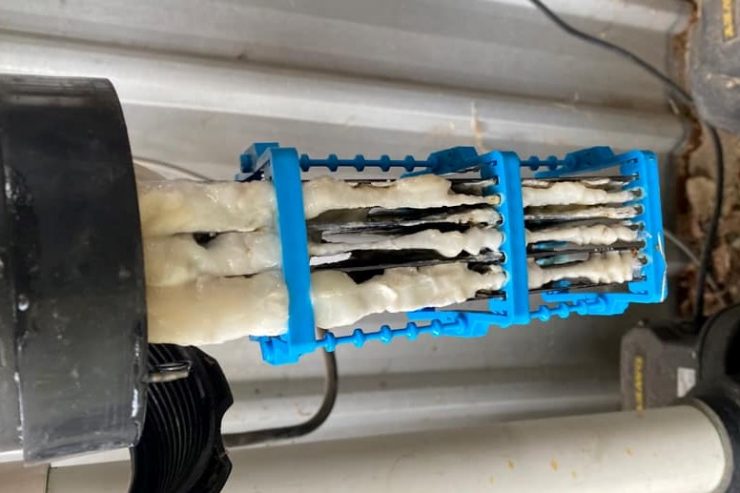
How To Fix Clogged Salt Cell
To fix this, you need to clear the calcium on the salt cell. The salt cell can be cleaned by soaking it in muriatic acid, vinegar, or a salt cell cleaner.
Here’s how to clean your salt cell:
How to Clean a Pool Saltwater Cell Like a Pro! (and when)
6) Algae Bloom
Another reason for a cloudy saltwater pool is algae infestation. Algae bloom is common if you haven’t been regularly maintaining your pool.
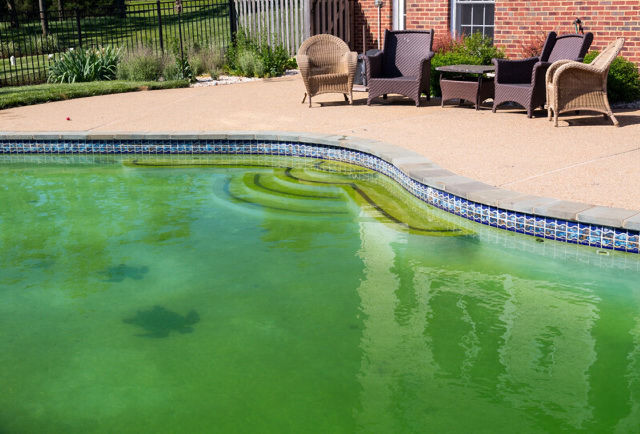
How To Fix Algae Bloom
The only way to fix this is to first brush all the walls of the pool. Then kill the algae by maintaining shock level chlorine levels. After you’ve done this, you will need to filter, filter and filter the water.
To shock or super chlorinate the pool, raise the free chlorine level to about 10-20 ppm with either liquid chlorine or cal-hypo. Make sure you do it at night. In bad cases of algae, you may need to maintain that chlorine level for several days.
Don’t use the pool until the chlorine levels drop to below 5 ppm. It’s a good idea to check your chlorine generator is working and set correctly. If it’s not, the algae will come back again.
7) Not Running The Saltwater Generator Long Enough
Your salt cell generator makes chlorine but the chlorine generator needs to be run for at least 7 hours daily to generate enough chlorine to prevent cloudy water. If you don’t run the saltwater generator (aka chlorinator) long enough, it will result in low chlorine levels and ineffective sanitization.
How To Fix
Simply run the saltwater generator and pool pump longer. Start by increasing it by 1-2 hours. Test the water after 24 hours to see if the chlorine levels are high enough. Increase the time again if they are not. You may need to adjust your pool timer to do this.
Another way to do this is to also increase the power level of the salt cell. That will increase the chlorine output and hopefully clear your hazy saltwater pool water. Try to keep the power range between 50 and 80% to reduce premature salt cell aging.
8) Faulty or Worn Out Salt Cell
A worn-out salt cell will not produce any chlorine or its output will be reduced. Which means less chlorine. And as you know by now, not enough chlorine in your saltwater pool means? You guessed it, cloudy or milky pool water. Or even algae.
Sometimes the temperature or flow sensors in the salt generator system can be faulty too, which will cause the salt cell to shut off or reduce the chlorine output. This can also cause a cloudy saltwater pool.
How To Fix A Damaged Salt Cell
Saltwater cells can be cleaned but not be repaired. The only fix for a worn-out salt cell is to replace the cell. If you suspect the sensors, you can replace them too. But a faulty cell is more likely.
9) Broken Pool Filter
Another very common reason for a cloudy saltwater pool is a damaged filter. The filtration system in your pool is responsible for trapping debris and contaminants that fall into the pool water. Without proper filtration, you will certainly have cloudy water.
In cartridge filters, the filter pleats can get torn or blocked up. DE Filters can have broken grids. And sand filters can have damaged laterals.
How To Fix Damaged Filters
If you suspect your filter isn’t working correctly, start by cleaning it (for cartridge filters), or in the case of sand and DE filters, backwash them. If this doesn’t fix the issue, you can replace the cartridges. For sand and DE filters, further inspection and dismantling will be necessary.
10) Not Running The Filter Long Enough
Just like regular chlorine pools, your saltwater pool has a pool filter.
To trap all the contaminants in the pool, the pool filters have to be left running for at least 8 hours. This is because all the water in the pool has to go through the pool filter at least once a day, preferably 2-3 times. In most cases, it takes at least 6-8 hours for a complete turnover of the pool water.
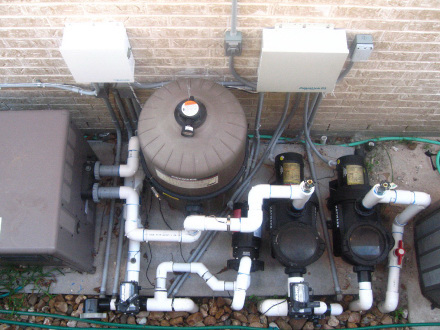
If you don’t run the pool filters long enough, you’ll end up with partial filtration because not all the pool water will be filtered.
How To Fix
Run the pool pump and filtration system longer. Start by increasing it by 2 hours and check the result after 2-3 days. If it’s still cloudy, try increasing the run time by another hour or 2. You shouldn’t need to run your filter longer than 12-14 hours a day in most cases.
11) Chlorine Generator Set Too Low
Every brand of salt cell chlorinator makes it possible for the user to set the salt cell chlorine output. The salt cell output determines how much chlorine will be produced by the chlorinator. If you set the salt cell output too low, you won’t have enough chlorine in the pool to keep the water cloud-free.
How To Fix Low Chlorinator Output
Start by increasing the chlorine generator’s output a little bit. The ideal output is between 50 and 80 percent. If the output is correct, you should have between 3-5 ppm of chlorine in the pool water.
If you need to increase the power level past 80%, then try running the chlorine generator for another hour or two. Also check the salt cell is clean.
12) Clogged Or Dirty Filters
The pool filters in your saltwater pool trap contaminants in the water but the filter system should be cleaned and rinsed regularly to prevent the trapped debris from clogging the system. A dirty or clogged filter will be less effective which will lead to cloudy water.
How To Fix Clogged Filters
The best way to fix this is to clean the pool filters. For sand and DE filters, try backwashing them.
For cartridge filters, you can do this using a pool filter cleaner. Soak the cartridges in the cleaning solution to dissolve scale. In some cases, you’ll need to replace the cartridges.
13) Low Salt Level
Saltwater pools make the needed chlorine by converting pool salt to chlorine through electrolysis. If you have a low salt level in the water, chlorine production will be reduced.
In many cases, when you have a low salt level, a warning light on your saltwater generator control panel will be lit or flashing. If you’re not sure what all the lights on your control panel mean, check out our article here.
How To Fix Low Salt Level
Add more salt to the pool to increase the salinity levels. You need to up the salt level to at least 3000 ppm for most pools. The correct salinity level needed varies from brand to brand. Check the user manual for your saltwater generator for the ideal saltwater level.
14) Dissolved Metals In The Water
A high level of metals in the saltwater pool could make saltwater pools look cloudy. In addition to cloudy water, high levels of metals cause stains on the pool walls and surfaces.
Before we look at fixing the issue, let’s take a look at why there are metals in your saltwater pool water.
Unless it’s pure water, pretty much all water has metals in it, particularly water that is supplied from wells. There are lots of different metals that can be in the water but the most common are zinc, copper, iron, magnesium, and silver. Well water has a much higher level of metals than town water.
Metals in the water don’t pose a risk to swimmers. The main problem is ascetics. Water can be discolored. For example, high iron levels will make the water look brown. Also the water may look cloudy and you may get stains, which doesn’t look great.
Often metals will be present in the water without causing any issues. It’s when you add high doses of chlorine (pool shock) that the metals can oxidize and cloud up the pool.
How To Lower Metals In The Pool
To fix this, you need to reduce the level of dissolved metals in the pool. There are several approaches:
- Drain the pool and refill using a water filter for metals. This product below goes on the end of your garden hose and filters out unwanted metals.
- Effectively eliminate solids, mineral deposits, trace metals
- Easy attachment to standard garden hoses
- Saves money by preventing stains & other water issues
- Use a sequestering agent, this doesn’t remove the metals but binds them up so they don’t cause an issue. This is a temporary solution but will help. Try this product:
- Stops discoloration from iron, calcium, copper & other metals/minerals
- Effectively protects against rust, stains & scale
- For pools & spas
- Use a metal remover – this will help you filter out the metals. Try this product c
- Removes metal stains in pools & spas
- Removes metals like iron, copper, silver & manganese
- Prevents scale & protects equipment
15) Poor Cleaning And Maintenance Routine
Your saltwater pool has multiple parts that should be cleaned and maintained properly such as the filters, salt cell, and pool walls.
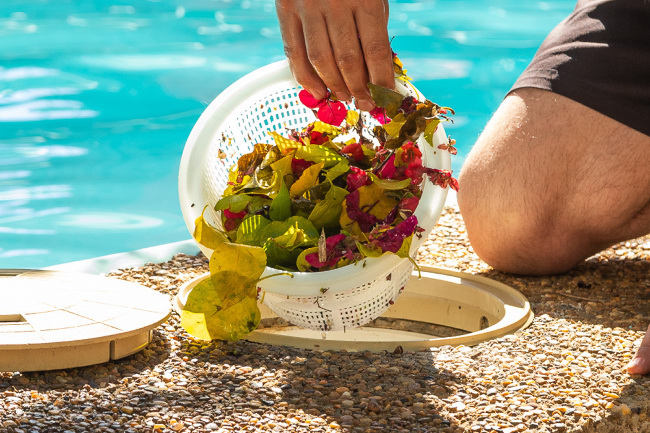
But the most important thing is maintaining a proper balance of chemicals and regular filtering of the water. Chlorine levels should be 3-5 ppm, stabilizer should be 30-60 ppm and pH 7.2 – 7.6. Be sure you run your filter for at least 8 hours per day.
In addition, it’s important to regularly brush the walls of your pool and to scoop out leaves. Doing all of this will mean your saltwater pool is free from cloudy or milky water.
How To Prevent Saltwater Pool From Turning Cloudy
The following tips will help you prevent a case of cloudy saltwater pool:
- Clean the pool filter regularly. Every two weeks is fine.
- Always scoop debris out of the water with a pool scoop net.
- Shock the pool after heavy rain or in case of algae. You can use this product:
- Powerful pool chlorine/shock treatment - great for killing algae & everyday chlorination.
- It can be used in all pools & doesn't raise stabilizer levels
- Clears cloudy & dull water
- Maintain chlorine levels at 3-5 ppm
- Use a hose filter when filling the pool to reduce calcium and minerals
- Run the pool filters for at least 8 hours daily
- Maintain salt levels at the specified level – usually about 3500 ppm
- Clean the salt cell regularly with a decalcifier. You can try a product like this:
- Removes scale, calcium deposits, & other contaminants from salt cells
- Fast acting in 15-30 mins
- Helps increase salt cell output
- Set the chlorinator output above 50%
- Replace damaged and worn-out parts of the pool
- Ensure the chlorine stabilizer or CYA levels is between 30 and 60 ppm.
- Always test the pool water chemistry with test strips to stay ahead of any potential problem.
Final Thoughts
Overall, to prevent your saltwater pool from turning cloudy, regular basic pool maintenance is essential. Regularly check chemical levels, do lots of filtering and you’ll pool will have clear water.
So there you have it. If you liked this post, ensure to check out others like it on this website for more pool tips.








